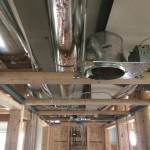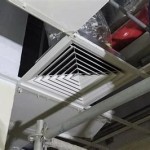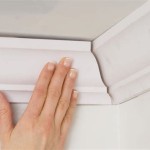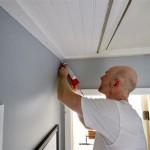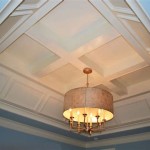How Deep Are Coffered Ceilings?
Coffered ceilings, characterized by their recessed panels or coffers, have graced architectural spaces for centuries, adding depth, dimension, and visual interest to interiors. A crucial aspect of their design is the depth of these coffers, which significantly influences the overall aesthetic and spatial perception of the room. The depth of coffered ceilings is not a fixed dimension; rather, it is a variable factor dependent on several elements, including the room's size, ceiling height, desired style, and the construction materials used.
Understanding the factors that influence coffer depth is essential for architects, designers, and homeowners alike. The selection of an appropriate depth ensures that the coffered ceiling complements the space and achieves the intended design goals. This article will address the factors that govern the depth of coffered ceilings and provide insights into the implications of choosing different depths.
Factors Influencing Coffer Depth
Several key parameters dictate the appropriate depth for coffers. These parameters often interact, necessitating a balanced approach to design and implementation. Consideration of these factors is crucial for achieving a harmonious and visually pleasing coffered ceiling.
Room Size and Ceiling Height: The dimensions of the room are arguably the most critical determinants of coffer depth. In rooms with high ceilings, deeper coffers can be employed without making the space feel cramped or oppressive. The increased height allows for more substantial recesses, enhancing the three-dimensional effect of the ceiling. Conversely, in rooms with lower ceilings, shallower coffers are preferable. Deep coffers in a low-ceilinged room can make the space feel smaller and close in, potentially creating an uncomfortable atmosphere. The goal is to maintain a sense of spaciousness while still incorporating the visual interest provided by the coffered design. A rule of thumb is to maintain a proportional relationship between the coffer depth and the overall height of the room. For example, in a room with 10-foot ceilings, a coffer depth of 6 to 12 inches might be appropriate, while in a room with 12-foot ceilings, coffers could go as deep as 12 to 18 inches, depending on the overall design intent.
Architectural Style: The intended architectural style plays a significant role in determining the appropriate coffer depth. Different styles have different conventions and aesthetic sensibilities. Traditional styles, such as classical or neoclassical, often feature deeper coffers with more ornate detailing. These styles prioritize a sense of grandeur and historical accuracy, which is often achieved through substantial architectural elements. Modern and contemporary styles, on the other hand, tend to favor shallower coffers with cleaner lines and a more minimalist aesthetic. The focus in these styles is often on simplicity and functionality, and deep coffers can appear overly elaborate or out of place. Transitional styles, which blend elements of traditional and modern design, offer a middle ground, allowing for moderate coffer depths that balance visual interest with a sense of contemporary elegance. The style of the rest of the room and the building should dictate the depth and ornamentation of the coffers.
Desired Aesthetic: Ultimately, the desired aesthetic and the homeowner's or designer's vision are key considerations. The depth of the coffers can dramatically alter the overall effect of the ceiling. Deeper coffers create a more dramatic and visually impactful statement, adding a sense of luxury and sophistication to the space. They can also enhance the perception of height, making the ceiling appear taller than it actually is. Shallower coffers, on the other hand, offer a more subtle and understated look, providing visual interest without overwhelming the room. They can create a sense of calm and serenity, particularly when combined with neutral colors and simple detailing. The selection of coffer depth should align with the overall mood and character that the designer aims to create. If the objective is to create a bold and impressive space, deeper coffers may be the preferred choice. If the goal is to achieve a more refined and understated ambiance, shallower coffers might be more appropriate.
Practical Considerations in Determining Coffer Depth
Beyond the aesthetic considerations, practical factors related to construction and materials influence the feasibility and cost-effectiveness of different coffer depths. Addressing these factors during the design process is vital for ensuring a successful installation.
Structural Integrity: The depth of coffers can impact the structural integrity of the ceiling, particularly in retrofit applications where the existing ceiling structure must be modified. Deeper coffers, requiring more extensive modifications to the joists or trusses, can potentially weaken the ceiling if not properly engineered and reinforced. It is imperative to consult with a structural engineer to assess theLoad-bearing capacity of the existing ceiling and determine if any additional support is needed to accommodate the coffered design. This is especially critical in older buildings where the structural elements may be weaker or compromised. The engineer can provide guidance on the maximum allowable coffer depth and recommend appropriate reinforcement strategies to ensure that the ceiling remains structurally sound.
Material Thickness and Weight: The materials used to construct the coffers also influence the depth limitations. Heavier materials, such as solid wood or plaster, require more substantial support structures, potentially increasing the overall cost and complexity of the project. Lighter materials, such as MDF (Medium-Density Fiberboard), plywood, or even lightweight composite materials, offer more flexibility in terms of coffer depth and design, as they place less stress on the ceiling structure. The thickness of the material also affects the overall appearance and perceived depth of the coffers. Thicker materials create a more substantial and visually imposing effect, while thinner materials offer a more streamlined and contemporary look. The selection of materials should be carefully considered in relation to the desired coffer depth and the overall design goals.
Lighting Integration: Coffered ceilings often incorporate lighting elements, such as recessed lighting, track lighting, or decorative pendants, to enhance their visual appeal and provide ambient illumination. The depth of the coffers can significantly affect the placement and effectiveness of these lighting fixtures. Deeper coffers offer more space for recessed lighting, allowing for a cleaner and more integrated appearance. The fixtures can be concealed within the recesses, providing a subtle and unobtrusive source of light. Shallower coffers may require surface-mounted lighting or track lighting, which can alter the overall aesthetic of the ceiling. The integration of lighting should be considered early in the design process to ensure that the coffer depth is appropriate for the desired lighting scheme. Proper planning can maximize the visual impact of the lighting and create a cohesive and well-illuminated space.
Typical Depth Ranges for Coffered Ceilings
While the specific depth of a coffered ceiling is highly dependent on the factors outlined above, general guidelines can provide a starting point for design considerations. These ranges are intended as starting points, and adjustments may be necessary based on the unique characteristics of the space and the design vision.
Shallow Coffers (2-6 inches): These coffers are best suited for rooms with lower ceilings (8-9 feet) or where a subtle, understated look is desired. They provide visual interest without overwhelming the space. This range is also suitable for contemporary designs where simplicity is paramount.
Medium Coffers (6-12 inches): This depth range is versatile and can work well in rooms with average ceiling heights (9-10 feet). They offer a balance between visual impact and spatial harmony and are suitable for transitional or eclectic designs.
Deep Coffers (12+ inches): These coffers are typically reserved for rooms with high ceilings (10+ feet) or where a dramatic and luxurious effect is desired. They create a strong visual statement and are often used in traditional or formal settings. Structural considerations are especially important at this depth.
It is crucial to note that these ranges are not absolute and may need to be adjusted based on the specific circumstances of the project. Consultation with an experienced architect, designer, or contractor is highly recommended to ensure that the chosen coffer depth is appropriate for the space and meets all relevant structural and aesthetic requirements.

Coffered Ceiling Diy Step By Install Guide Arched Manor

Coffered Ceiling Inspiration Socaltrim Discount Molding Millwork

The Craft Of Coffered Ceilings Fine Homebuilding

Plastic Ceiling Panels 1280bxa Ceilings Armstrong Residential

Coffered Ceiling Diy Step By Install Guide Arched Manor

Coffered Ceiling Moulding Plans From Kuiken Brothers Design Guide

Coffered Ceiling Layout Thisiscarpentry

An Easy Approach To Coffered Ceilings Fine Homebuilding

What Is A Coffered Ceiling Prestige Painting Gta

Plastic Ceiling Panels 1280blbxa Ceilings Armstrong Residential
Related Posts

